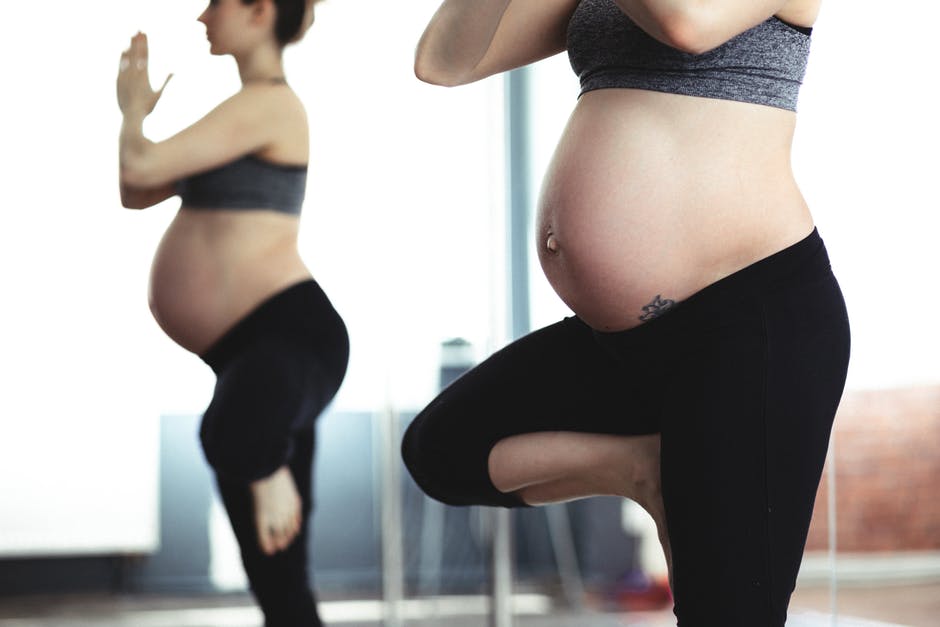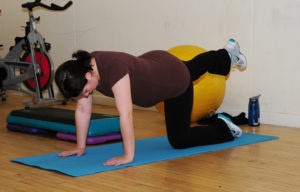
Having a baby profoundly changes your life. Obviously not only does your body change significantly, but also your mentality shifts tremendously because — realistically speaking — your life and your time is no longer your own. You are now responsible for the literal health and well-being of another small human, someone who literally depends on you to satisfy every single physical, mental, and emotional need during every waking (and sleeping) minute of every single day.
That said, when you become a parent, it’s not as though your own needs s disappear into thin air. You still need all the priorities you needed in life before you became a parent, things like good, nutritional feed, sleep, physical activity, and emotional connections with loved ones; it’s simply that in the immediate newborn aftermath, your own needs can sometimes get pushed to the wayside while you navigate postpartum life and parenthood. It can be frustrating, to be sure, but it’s also completely understandable and typically — fortunately — pretty temporary.
One challenge, in particular, that many postpartum parents (and especially mothers) grapple with is postpartum fitness. For the previous 40 weeks, they were somewhat restricted as to which activities they could safely perform with a growing fetus in their uterus, and now that they have a real-life baby in their arms, many mothers think that they instantaneously have free and full reign to do whatever they’d like, whatever they’d like, and at whatever intensity they’d like.
Unfortunately, this somewhat cavalier attitude toward postpartum fitness is what sidelines many postpartum mothers for weeks, if not months, if not years after having children. They don’t realize, and their practitioners don’t advise them otherwise, that postpartum fitness should be approached delicately and intentionally, ultimately paying great respect and deference to all the transformation their bodies just underwent in the preceding 40 weeks.
Your body doesn’t change from 0 weeks pregnant to 40 weeks pregnant overnight; accordingly, when it comes to postpartum fitness, postpartum mothers shouldn’t get trapped into thinking that they can literally overnight go from the postpartum, post-childbirth body to the body they had before they had ever conceived.
Below, I’ll provide some additional guidelines to help postpartum mothers navigate postpartum exercise. Please note that my recommendations don’t supercede those of a qualified medical practitioner or your own practitioner, and if you have any doubt, definitely talk to your professional and heed his/her advice for you.
Some tips to help postpartum mothers navigate postpartum exercise include the following:
Don’t resume activity until you’ve gotten medical clearance from your provider.
It can be really tempting to want to jump back into activity so you can feel like yourself again, or better fit back into your pre-baby, non-maternity clothes, but I urge you to reconsider. Childbirth and literally growing a fetus inside your body takes a tremendous toll on it, and it’s important to give yourself adequate time to recover from both processes. Some women will get cleared at three weeks, and some others won’t get cleared until 6 weeks or possibly even later. Moreover, depending on the type of birth you had — by C-section or vaginally — your recovery may differ tremendously. Be patient and kind to your body that literally just produced life and gave you so much. When — and only when — your provider says that you can safely resume exercise should you actually do so.
Take things slowly, gingerly, and conservatively when you’re getting back into it.
Again, it can be really tempting to want to jump back in full-throttle once you’ve gotten the all-clear, but don’t do it. Be patient and kind to your body and all that it endured over the past 40 weeks. Even gentle exercise can be a huge mood-lifter and can be enough to break through the haze that is the newborn stage, rife with sleep deprivation, confusion, and frustration. Going for a walk around your local grocery store, pushing your stroller or wearing your baby in an infant carrier for 10 minutes each day, or even simply walking up and down your stairs while your baby naps can be a great way to begin your postpartum fitness routine. If you run, your first runs postpartum may feel really awkward and uncomfortable, and if you don’t like how you feel, don’t do it. Give yourself time and patience.
Follow-up with a women’s pelvic health PT if you’re experiencing any pelvic-related problems.

A lot of OBs and midwives give their patients the all-clear to begin exercising but then don’t really follow-up much if their patients are having pelvic floor health problems related to childbirth or pregnancy simply because most OBs and midwives don’t have a ton of training in this domain. Postpartum, if you notice that you are leaking urine or fecal content, if you have pain while going to the bathroom, or if you suspect you have a case of diastasis recti, do some research to find a local pelvic health PT near your home, and go in for an evaluation. Many women postpartum have some type of pelvic health issue, and unfortunately, many women think that it’s just a fact of postpartum life: that they will always leak urine when they sneeze, or that they will always have DR, and the like. The reality is that a PT can work with you to help rectify these problems and in turn, can help strengthen so much of the musculature that was stressed during the throes of pregnancy and childbirth.
Recognize that every little bit helps
Before you had your baby, you might have been accustomed to freely going for 60 minute runs whenever and wherever you wanted, but in your immediate postpartum days, you may feel tethered to your baby at every waking hour. That’s completely normal, and it’s understandably frustrating. Realize, though, that whatever you can do for your postpartum fitness — even if it means going for a 10 minute run — matters and can help you feel great, rejuvenated, and refreshed. Getting into a regular fitness routine, particularly postpartum, can help keep postpartum depression at bay, and you may even feel like it helps bring you life when you’re otherwise feeling enshrouded in the postpartum infancy, total zombie-like stage.
It can be tough to navigate postpartum exercise, but the reality is that despite what you may read online, of women who are suddenly in their pre-baby jeans as they walk out of the hospital, or of women who are already at their pre-baby weight within the first month postpartum, most women — nearly all women, I’d wager — simply aren’t. It takes time to arrive at fitness levels that are comparable to what you had pre-baby, and it’s with good reason, too, since your priorities have shifted dramatically. More than anything, please be patient with yourself, and kind to your body, and remember that just like pregnancy and growing a child, postpartum fitness also takes time.
AUTHOR’S BIO: JANE GRATES

A full time marathoner and a vegan. Doing at the sweet spot between art and intellectual purity to develop visual solutions that inform and persuade.